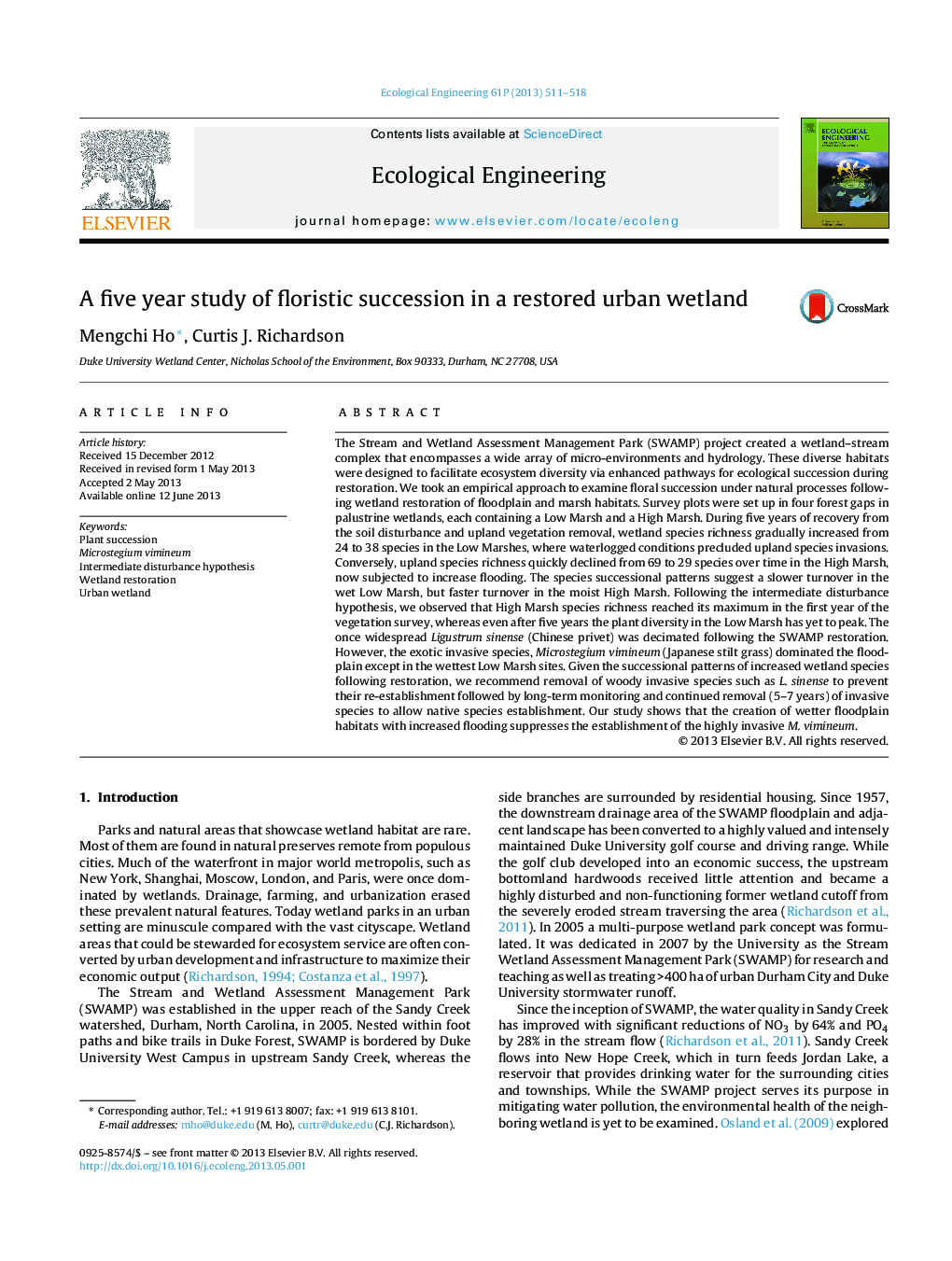| کد مقاله | کد نشریه | سال انتشار | مقاله انگلیسی | نسخه تمام متن |
|---|---|---|---|---|
| 4389519 | 1305130 | 2013 | 8 صفحه PDF | دانلود رایگان |

The Stream and Wetland Assessment Management Park (SWAMP) project created a wetland–stream complex that encompasses a wide array of micro-environments and hydrology. These diverse habitats were designed to facilitate ecosystem diversity via enhanced pathways for ecological succession during restoration. We took an empirical approach to examine floral succession under natural processes following wetland restoration of floodplain and marsh habitats. Survey plots were set up in four forest gaps in palustrine wetlands, each containing a Low Marsh and a High Marsh. During five years of recovery from the soil disturbance and upland vegetation removal, wetland species richness gradually increased from 24 to 38 species in the Low Marshes, where waterlogged conditions precluded upland species invasions. Conversely, upland species richness quickly declined from 69 to 29 species over time in the High Marsh, now subjected to increase flooding. The species successional patterns suggest a slower turnover in the wet Low Marsh, but faster turnover in the moist High Marsh. Following the intermediate disturbance hypothesis, we observed that High Marsh species richness reached its maximum in the first year of the vegetation survey, whereas even after five years the plant diversity in the Low Marsh has yet to peak. The once widespread Ligustrum sinense (Chinese privet) was decimated following the SWAMP restoration. However, the exotic invasive species, Microstegium vimineum (Japanese stilt grass) dominated the floodplain except in the wettest Low Marsh sites. Given the successional patterns of increased wetland species following restoration, we recommend removal of woody invasive species such as L. sinense to prevent their re-establishment followed by long-term monitoring and continued removal (5–7 years) of invasive species to allow native species establishment. Our study shows that the creation of wetter floodplain habitats with increased flooding suppresses the establishment of the highly invasive M. vimineum.
Journal: Ecological Engineering - Volume 61, Part B, December 2013, Pages 511–518